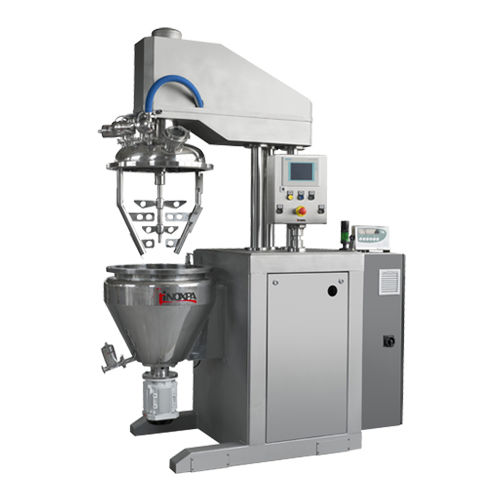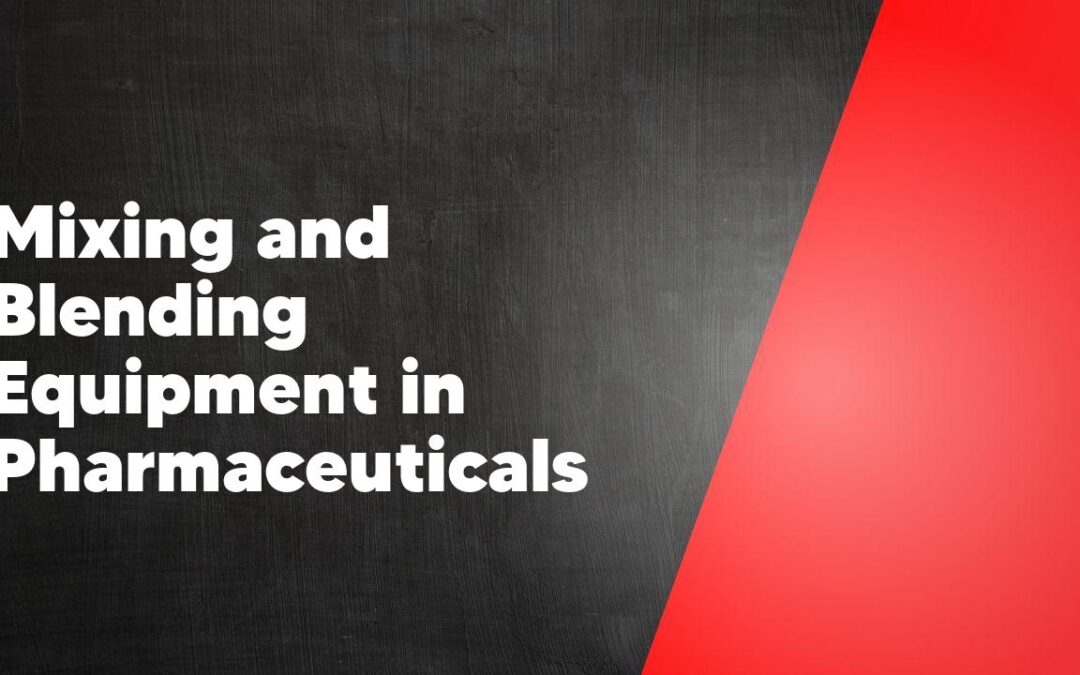This article examines the different types of mixing and blending equipment used in the pharmaceutical industry. Mixing and blending are crucial processes in pharmaceutical manufacturing as they are responsible for ensuring the uniform distribution of ingredients and the homogeneity of the final product. Understanding the various equipment options available can help pharmaceutical companies optimize their manufacturing processes and produce high-quality medications.
1. Importance of Quality Mixing and Blending Equipment in Pharmaceuticals
As a pharmaceutical professional, I cannot stress enough the importance of quality mixing and blending equipment in our industry. The process of mixing and blending is a critical step in pharmaceutical manufacturing, as it ensures the uniform distribution of active ingredients and excipients in our medications. With poor quality equipment, there is a risk of inconsistent product quality, which could lead to ineffective or even harmful drugs reaching the market. Therefore, investing in high-quality mixing and blending equipment is essential for ensuring the safety and efficacy of pharmaceutical products. With the right equipment, we can achieve precise and consistent mixing, leading to improved product quality and patient outcomes.
2. Different Types of Mixing and Blending Equipment used in Pharmaceuticals

One of the key factors in the pharmaceutical industry is the use of different types of mixing and blending equipment. These machines are essential for ensuring that the ingredients in medications are properly mixed and blended to create a consistent and effective product. Some of the commonly used equipment includes blenders, mixers, and granulators. Blenders are used to mix dry powders together, while mixers are used to mix liquids and semi-solids. Granulators, on the other hand, are used to break down larger particles into smaller ones, which allows for better mixing and blending. Overall, the use of these various types of equipment is crucial to the pharmaceutical manufacturing process, ensuring that medications are safe and effective for consumers.
3. Factors to Consider when Choosing Mixing and Blending Equipment for Pharmaceuticals
When it comes to choosing the right mixing and blending equipment for pharmaceuticals, there are several factors to consider. Firstly, the type of product being manufactured is crucial. Different pharmaceutical products may require different types of mixing and blending equipment, depending on their viscosity, density, and other characteristics. Secondly, the scale of production should be taken into account. Small-scale operations may not require the same level of sophistication as large-scale pharmaceutical manufacturers. Lastly, it is important to consider the regulatory requirements and standards that need to be met. Pharmaceutical manufacturers must adhere to strict quality control guidelines, so choosing equipment that meets these standards is essential. By carefully considering these factors, pharmaceutical companies can ensure that they are selecting the most suitable mixing and blending equipment for their specific needs.
4. How Mixing and Blending Equipment improve Efficiency and Productivity in Pharmaceutical Manufacturing
In my opinion, mixing and blending equipment play a crucial role in enhancing efficiency and productivity within the pharmaceutical manufacturing industry. These machines are specifically designed to ensure proper mixing and blending of ingredients, resulting in consistent and high-quality products. By using such equipment, pharmaceutical companies can significantly reduce the time and effort required for manual mixing, ultimately increasing productivity and output. Additionally, these machines offer precise control over the mixing process, allowing for accurate dosing of ingredients and minimizing the risk of errors or inconsistencies. Overall, the utilization of mixing and blending equipment is vital for streamlining manufacturing processes, improving efficiency, and ensuring the production of safe and effective pharmaceutical products.
5. Common Challenges and Solutions for Mixing and Blending in the Pharmaceutical Industry
As a pharmaceutical industry professional, I have encountered my fair share of challenges when it comes to mixing and blending medications. One common issue that arises is the variability in particle size of the ingredients, which can greatly affect the homogeneity of the final product. To address this, precise control of the milling process becomes essential. Additionally, cross-contamination between different drugs is a major concern. This can be mitigated by implementing stringent cleaning procedures and utilizing dedicated equipment for each product. Lastly, maintaining consistency in the blending process is crucial for ensuring the efficacy and safety of the medications. Regular monitoring and validation of blending equipment can help in achieving the desired uniformity. Overall, by being aware of these common challenges and implementing appropriate solutions, we can ensure the quality and reliability of pharmaceutical mixing and blending processes.
6. Latest Technological Advances in Mixing and Blending Equipment for Pharmaceuticals
As a pharmaceutical researcher, I am constantly amazed by the latest technological advances in mixing and blending equipment. These advancements have revolutionized the way we create and produce medicines. With the introduction of cutting-edge technologies, such as high-speed mixers and automated blending systems, we are able to achieve more precise and efficient results in drug manufacturing. These state-of-the-art machines have the capability to handle a wide range of ingredients and produce consistent and uniform mixtures, ensuring the potency and quality of the final pharmaceutical products. The integration of advanced sensors and monitoring systems also allows us to closely monitor the mixing process and make necessary adjustments in real-time. This not only enhances productivity but also minimizes the risk of human error, ensuring the safety and efficacy of the medications we develop. Overall, the continuous advancements in mixing and blending equipment have significantly contributed to the advancement of pharmaceutical science and improved patient care.
Conclusion
In conclusion, the use of mixing and blending equipment plays a crucial role in the pharmaceutical industry. It ensures uniformity and homogeneity of the ingredients, leading to consistent and reliable medications. With advancements in technology, these equipment continue to evolve and enhance the efficiency and quality of pharmaceutical production.
What is mixing equipment used for in the pharmaceutical industry?
Mixing equipment is used to combine different ingredients or substances in the pharmaceutical industry. It ensures thorough and uniform mixing, which is crucial for the production of medications.
Why is uniform mixing important in pharmaceutical manufacturing?
Uniform mixing is important in pharmaceutical manufacturing to ensure consistent distribution of active ingredients and excipients throughout the medication. This helps in achieving the desired efficacy and safety of the final product.
What are the commonly used types of mixing equipment in the pharmaceutical industry?
The commonly used types of mixing equipment in the pharmaceutical industry include tumbling mixers, ribbon blenders, paddle mixers, fluid bed mixers, and high shear mixers.
What are the advantages of using automated mixing equipment in pharmaceutical manufacturing?
Automated mixing equipment offers several advantages in pharmaceutical manufacturing, such as improved precision, reduced human error, increased efficiency, and the ability to handle large volumes of ingredients.
Are there any regulatory requirements for mixing equipment used in pharmaceutical manufacturing?
Yes, there are regulatory requirements for mixing equipment used in pharmaceutical manufacturing. These requirements ensure that the equipment meets certain standards of quality, safety, and effectiveness set by regulatory authorities.
What factors should be considered when selecting mixing equipment for pharmaceutical manufacturing?
When selecting mixing equipment for pharmaceutical manufacturing, factors such as the type of ingredients, required mixing capacity, mixing time, energy consumption, ease of cleaning, and compliance with regulatory standards should be considered.

